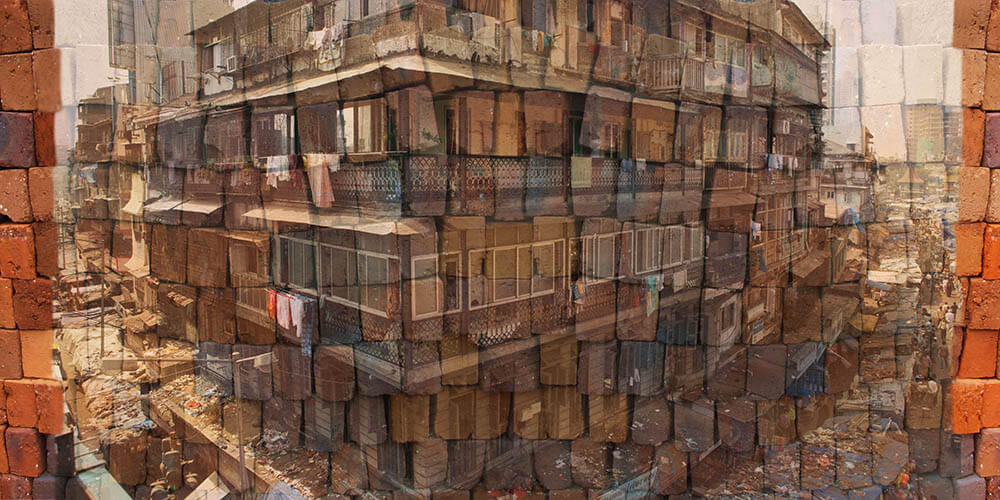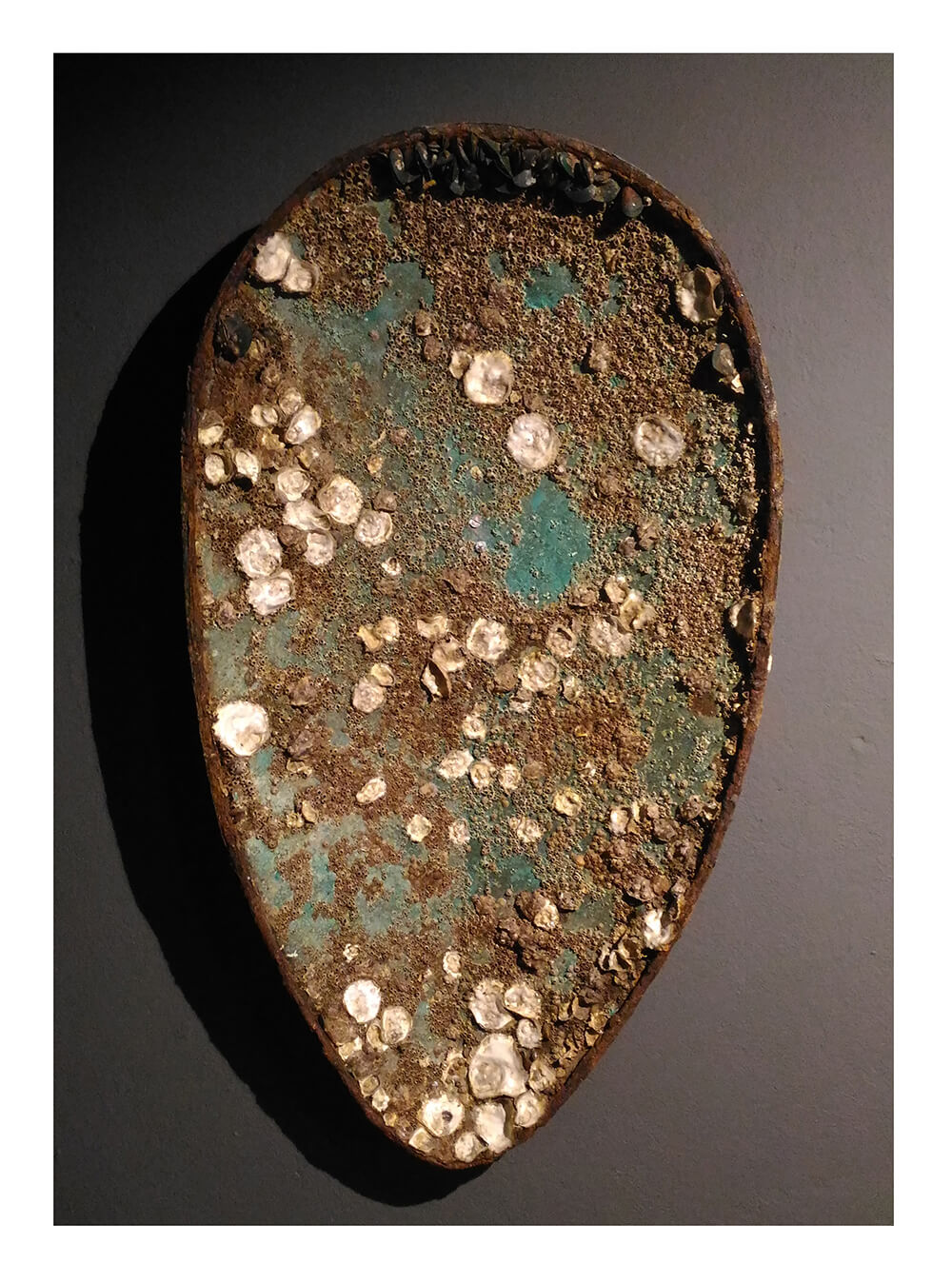“Individuality of expression is the beginning and end of all art.”
– Johann Wolfgang von Goethe, German writer and politician –
While all art is an individual expression, to quote Johann Wolfgang, it also acquires multiple meanings that are beyond its individual expression. This is because it reaches out to a larger audience in the public realm. Art possesses a particular quality of ambiguity, since it is a visual expression which allows it to lend itself to multiple readings. To explain the underpinning concept behind this exhibition, let us begin with the title. ‘Part and Trap’ are not mere Semordnilap, it is much more. For the uninitiated, a Semordnilap is a term coined in recent years that refers to words and phrases which make sense when read backwards but have a different meaning from when they are read forwards. It’s a palindrome that is a self-referential word, one that encapsulates within itself the thing it represents.
I have used this as the title of the exhibition featuring these artists because I believe that their works may be read as visual palindromes that are essentially in nature Semordnilap. Through their works in this exhibition the participating artists probe further, beyond their art practice or even styles, to decipher these words in the context they hold. The artists decode the concept, PART and TRAP, as two sides of the same the coin, that are similar and yet different in visual representation. The Participating artists of this exhibition are Gigi Scaria, Jalaja P.S., G.R. Iranna, Manjunath Kamath, Jagannath Panda, Pooja Iranna,.Valay Gada, Josh PS, Prasanta Sahu, Subodh Kerkar and Vishakha Apte.
These artists approach the deciphering of the Semordnilap through a cluster of concepts. A concept is an abstract idea representing the fundamental characteristics of what it represents. Concepts arise as abstractions or generalisations from experience or the result of a transformation of existing ideas. The concept is instantiated or reified by all of its actual or potential instances, whether these are things in the real world or other ideas. Concepts are treated in many if not most disciplines both explicitly and implicitly. In informal use the word concept often just means any idea, but formally it involves the abstraction.
Jagannath Panda through his work Trap Rockattempts to speak about the dichotomy of spaces. Through a window we seem to be looking around various visuals – coal being transported in a train wagon;Amazon cartons being delivered and also an image of the Didarganj Yakshi which the artist viewed at the Bihar Museum. The Yakshi itself is a symbol of wealth and protection, but the landscape appears exploited at the hands of all this material ‘progress.’
Josh P. S’s work revolves around the importance of various historic events and their representation in history. In his work Charithra Rekhagal or Historic Documents, the artist depicts a continuous swirl of black charcoal line emanating from a pedestal. Lines, the artist says, when crossed or altered creates history.
G R Iranna’s artworks Carpet as Witness and Carpet as Shadow deals with the polarities of materiality, presence and disappearance. It unravels the mystery of life and death and its persistence in human memory. His works are realized in three stages: first, the idea, second, the material which connect so well with the idea and third, the colours. In these works’ he explores the idea of ash or mud which is the final form of every living being. Manjunath Kamath’s work Hayavadana deals with narratives that reference contemporary and historic images. By telescoping time with images from Renaissance paintings and his own images of contemporary life, Kamath alters and adjusts his narrative, constantly, adapting fluidly according to the environment they are narrated in. As a result, each image may be read as a palindrome with a different meaning each time a story is told.
Gigi Scaria’s works titled Maze and Everyday speak of urban dysphoria. The first is a watercolour on paper that recreates an Orwellian nightmare where the concrete jungle of buildings leaves but a sliver of sea visible. The other image, a triptych of photographs also echoes the same concern of concrete dominating life in the growing metropolis of Asia. Pooja Iranna’s work also reflects on the edifice, though her interaction with architecture is more metaphorical rather than ethnographic. Here the building is treated as a human andits ontological meaning. Through her works Unremitting Expansion-I and Juxtaposed Expansions, she reflects upon the bewildering demands of a consumerist, modern society, their illumined hopes and dreams.
Prasanta Sahu’s images are culled from mass media. Here he deconstructs a chair, that is also symbolic as the seat of power, surrounding it with a loose narrative of objects and creatures: The hind quarters of a goat, the rind of a pumpkin, the spokes of a bicycle wheel and geometrical instruments-all indicative of everyday existence and yet left as mysterious clues to unravel the puzzle or snippet of ourmundane reality.
In his work City Forest4, Valay Gada represents a cityscape from an aerial view glittering in the night sky.However, on closer inspection it is also a termite tube. It personifies us humans as termites constantly digging and draining all resources ultimately denuding our very planet, without regard. The other work, Monstrance1: All passion spent, is inspired both figuratively and literally by the passion flower, Passiflora. In this instance it is used to reference the Passion of Christand indicates both his suffering and sacrifice. Jalala PS’s painting Inspiring Speeches for Indians (You Can’t afford to Miss Series) is a ribald critique of our political scenario where monkey’s and humans share the same stage. The woman (who symbolizes the party cadre) is holding the microphone along with a huge bunch of bananas to tempt and win her audience and supporters. Jalala focuses on the contradictions of mankind whose experience becomes the representation of a society andsometimes of a country. Subodh Kerkar’s creates mysterious objects from the sea layered with his rich Goan-Portuguese heritage. His metal oysters are not just symbolic of the sea and natural elements, but it also resonates with the primordial shapes of the universe. The pearl alters appear as relics from the past, an enshrinement to both the passage of time and the slow violence of environmental degradation. Finally, Vishakha Apte’s Untitled objects allow the viewer more of an ambiguous experience of shape and colour, playing into the visual palindrome that can be read from various sides with a plethora of interpretations. Drawing upon the suburb of Mumbai, Apte creates geometrical shapes that atrophy into colourful-landscapes. Together these works bring the viewer in dialogue with ideas, concepts and objects that may read forwards and backwards like Semordnilap, providing one with a rich variety of narratives. Each work is individualistic but yet open to interpretation from the viewer’s own subjective view point. Appealing to their higher cognitive process such as finding meaning and decoding clues. The possibilities as they say are endless.
Venue – F-213-A, Near HDFC Bank,
Old MB Road, Lado Sarai,
Delhi-110030


































































